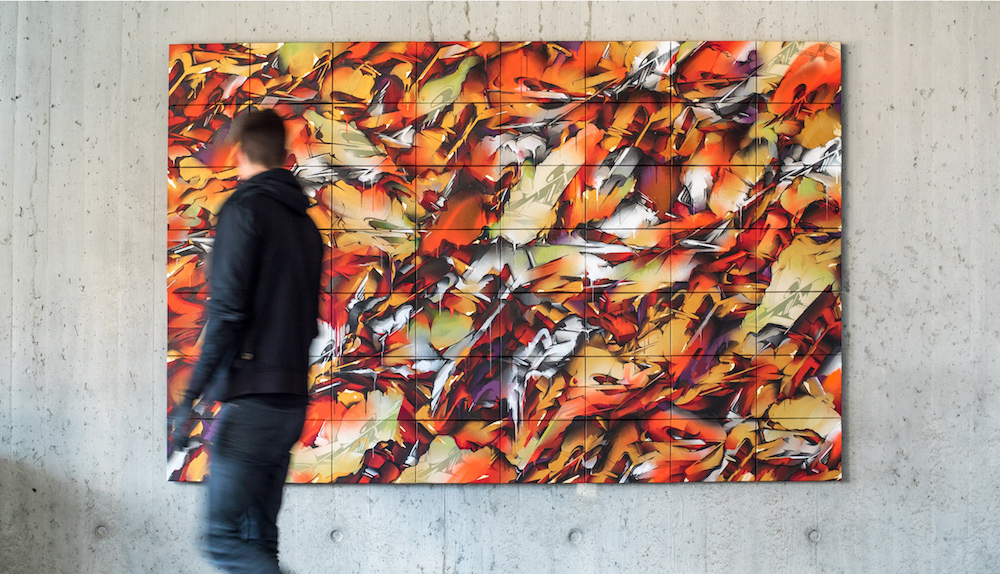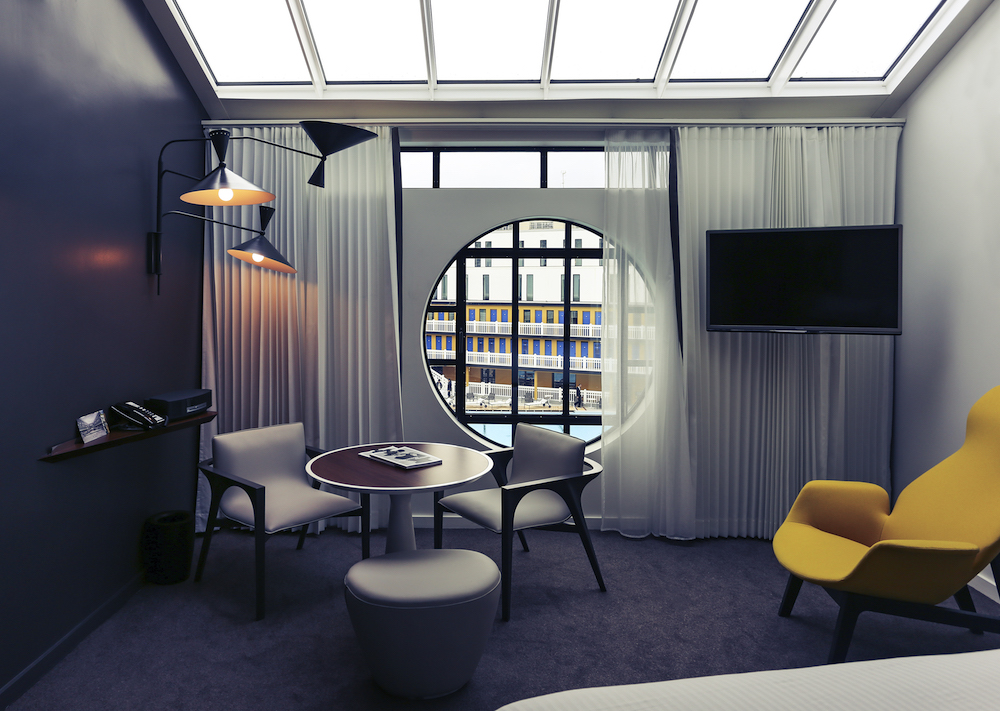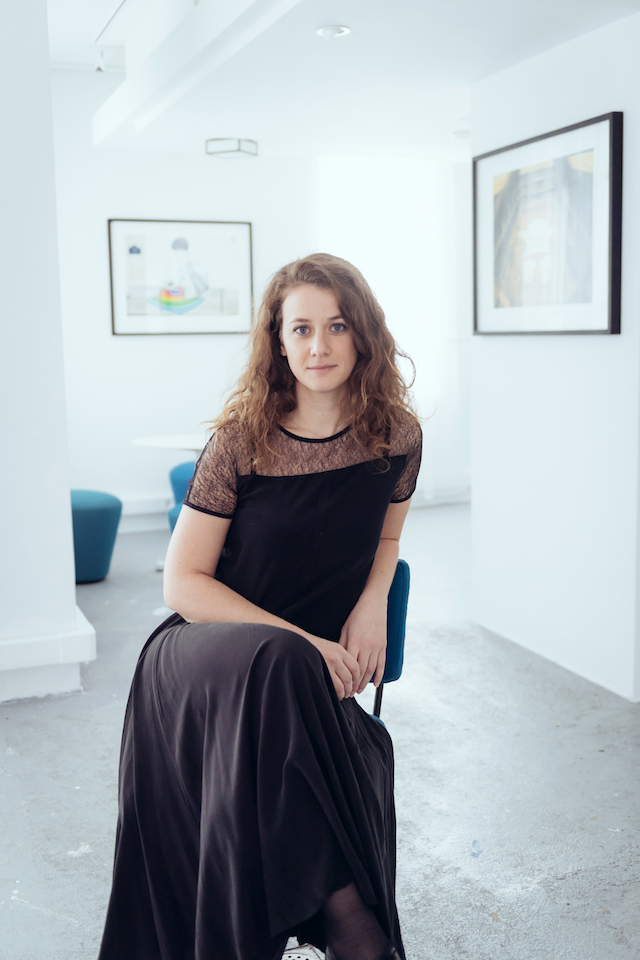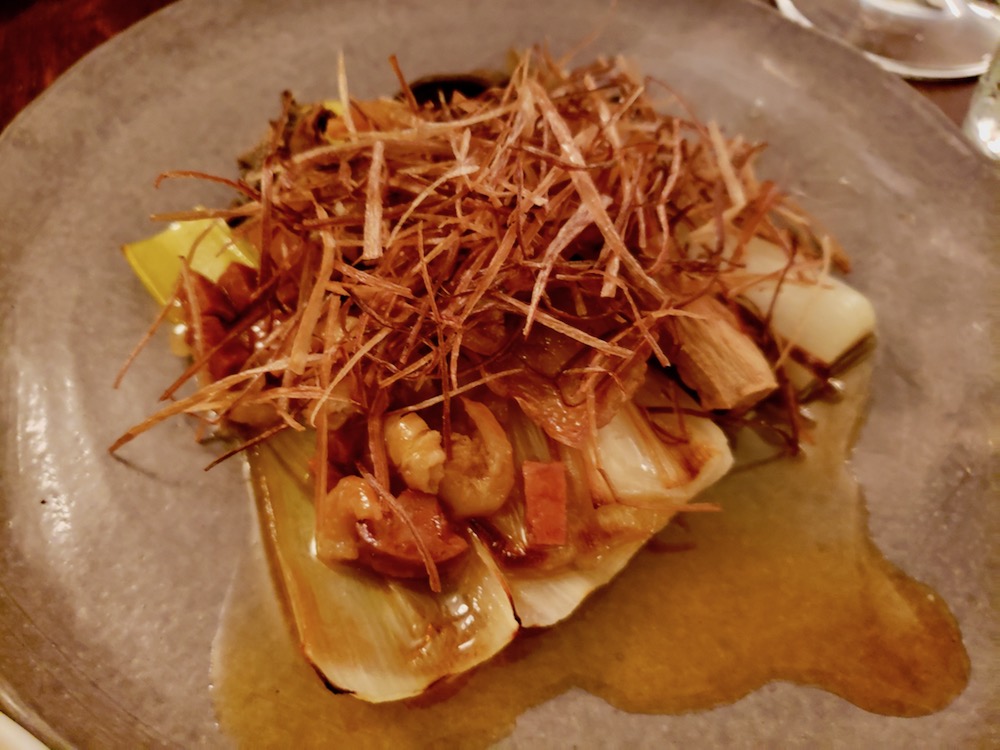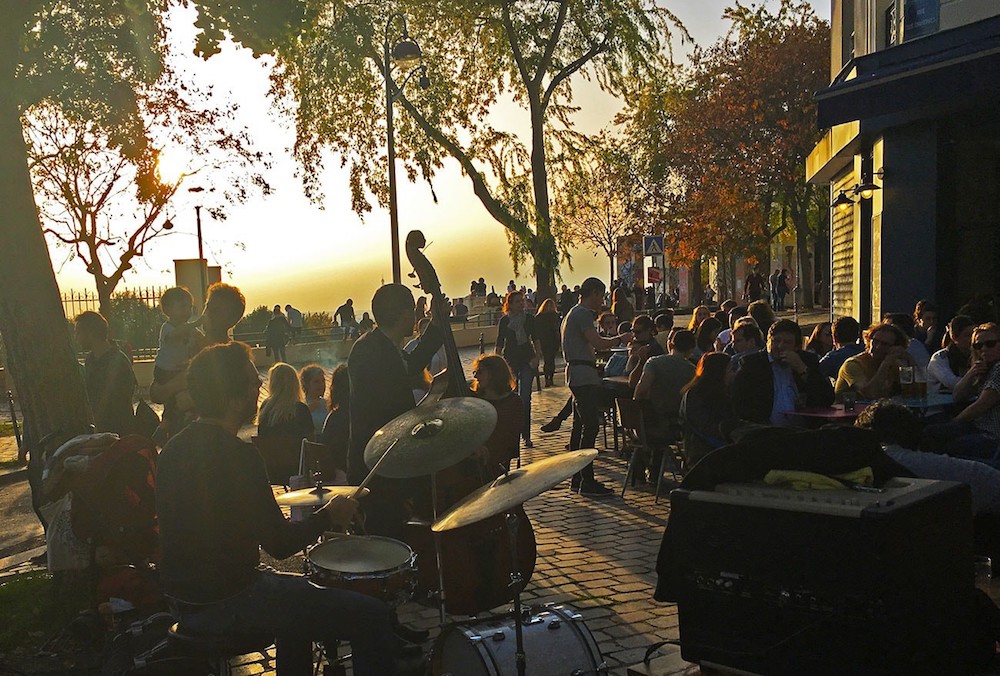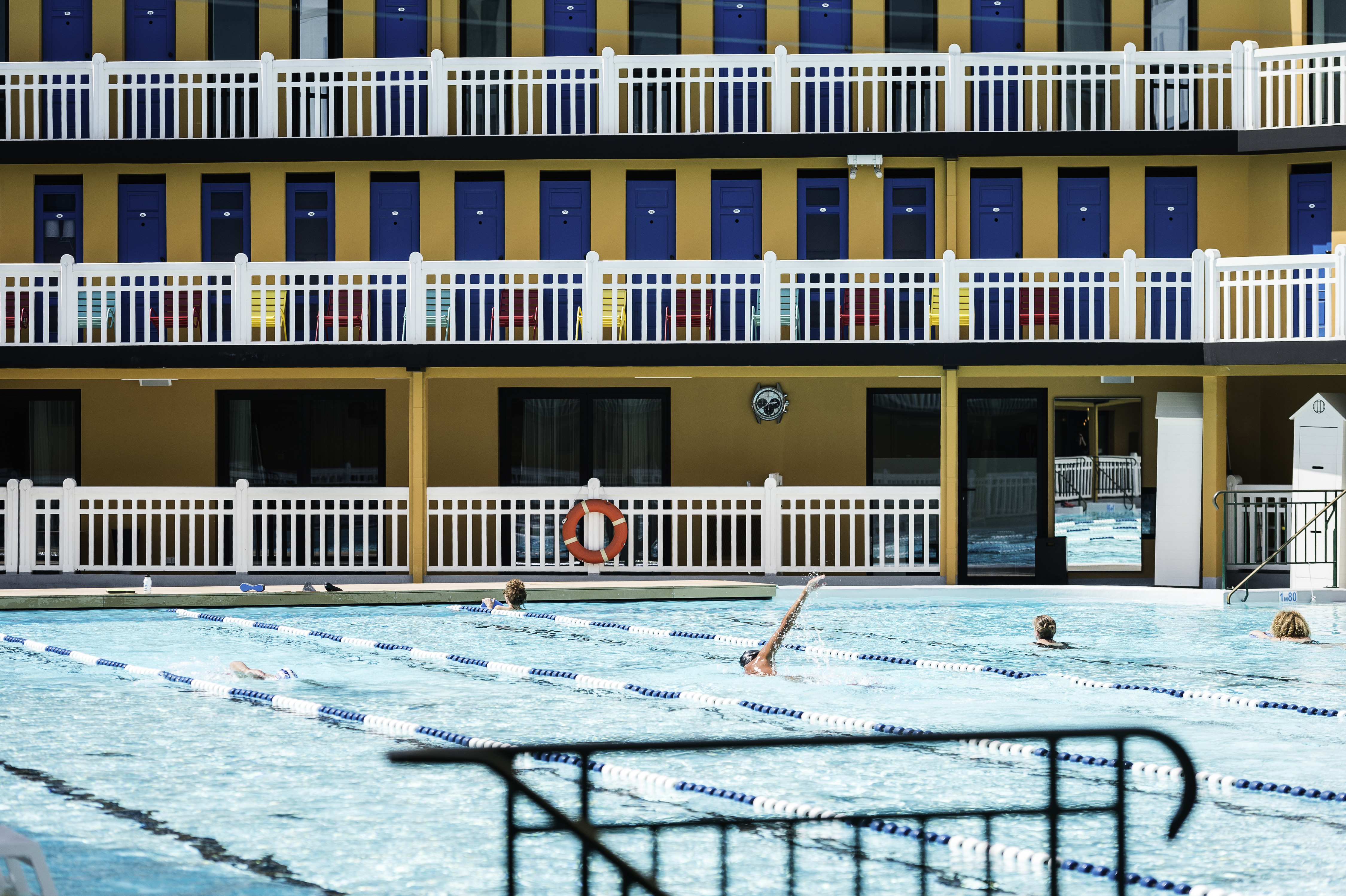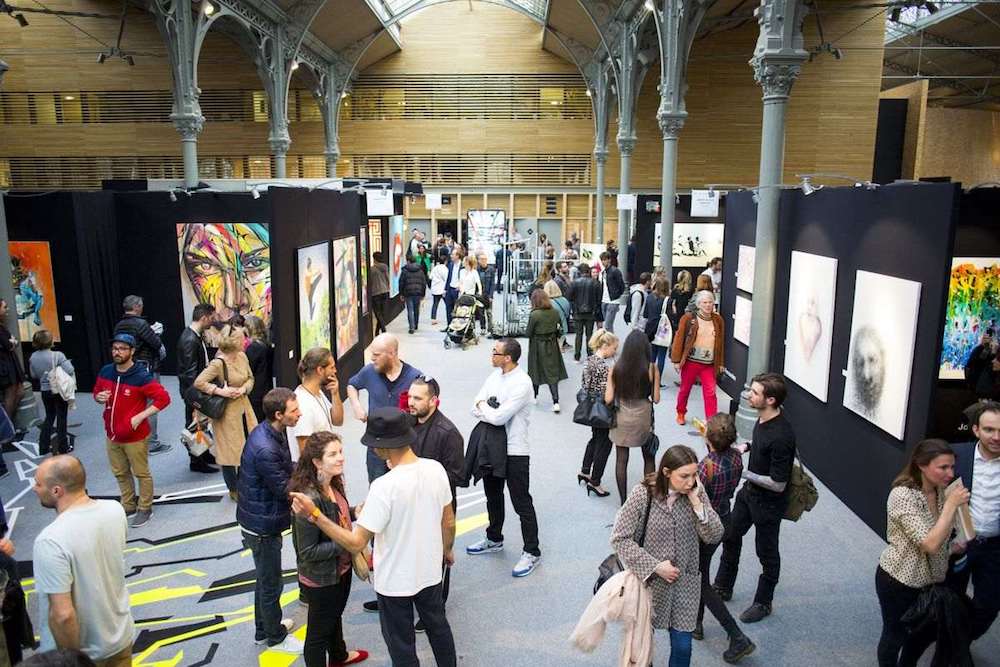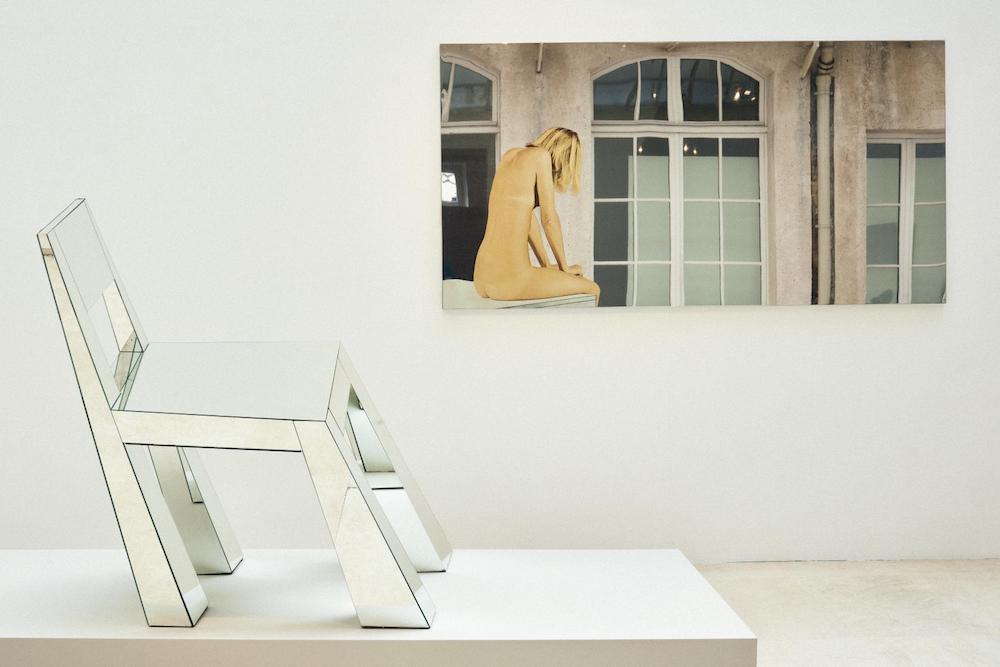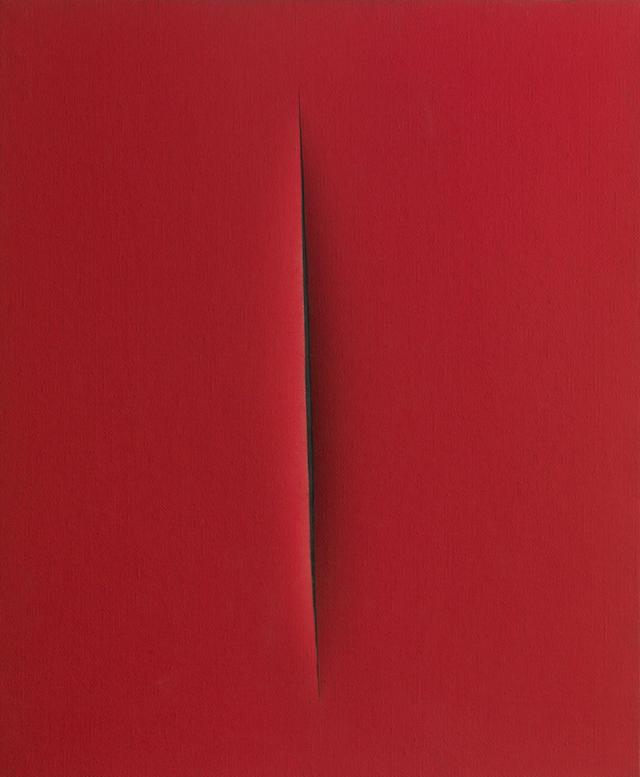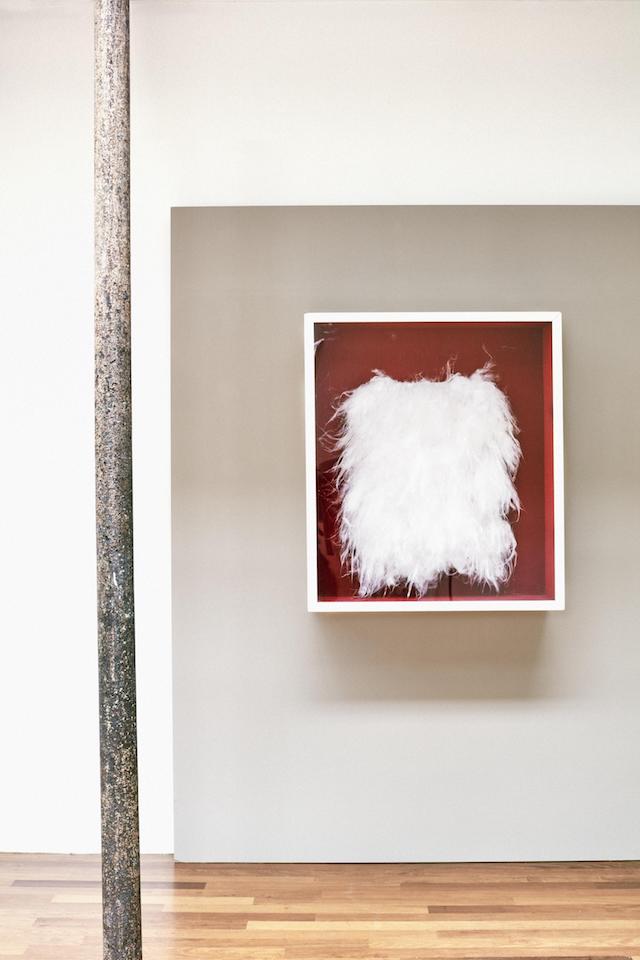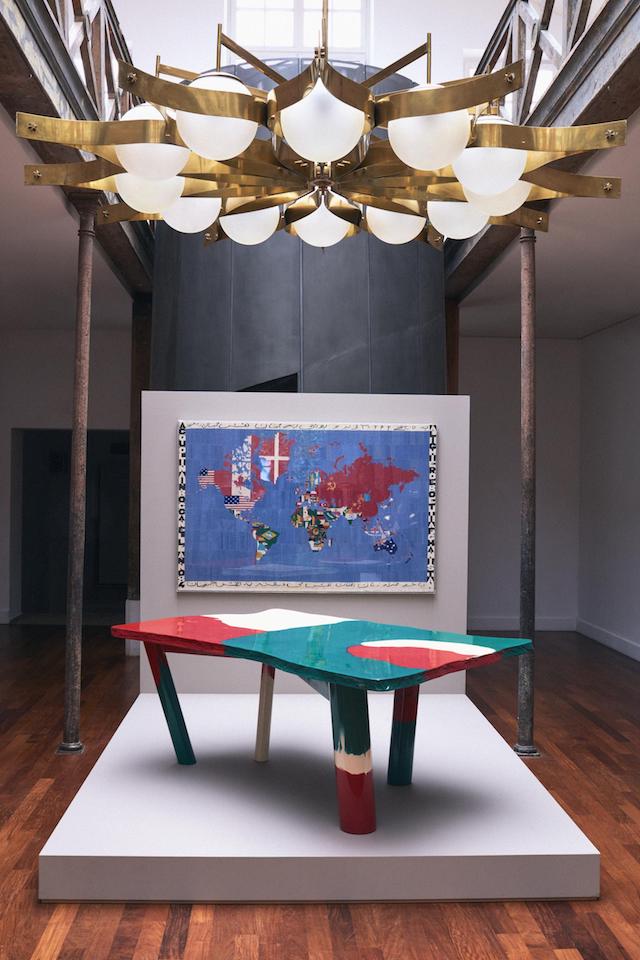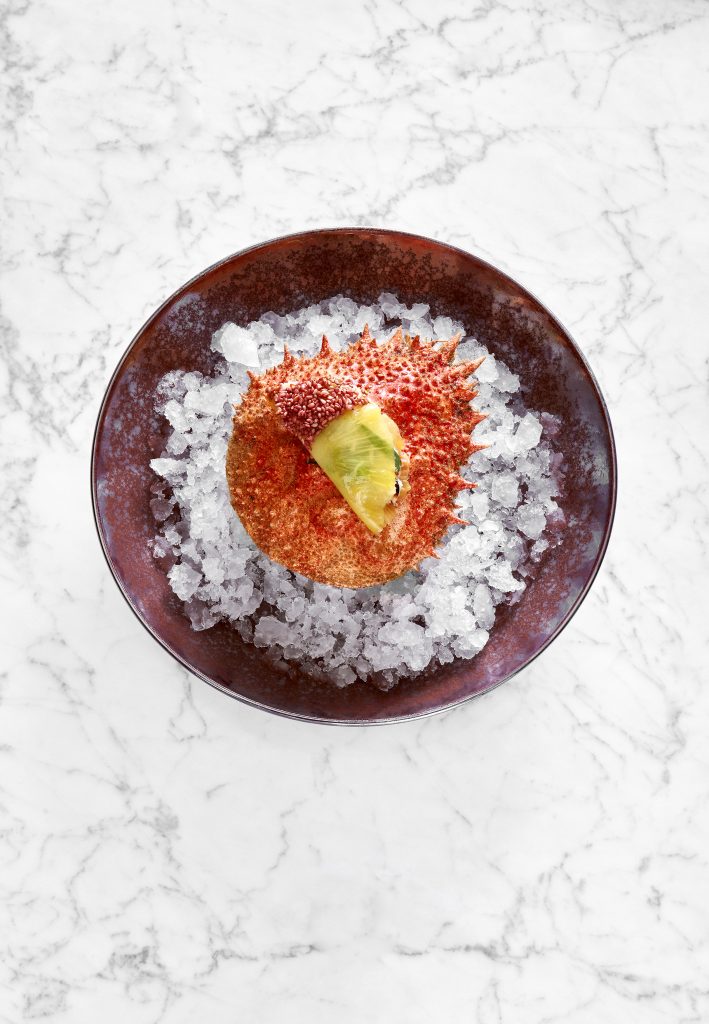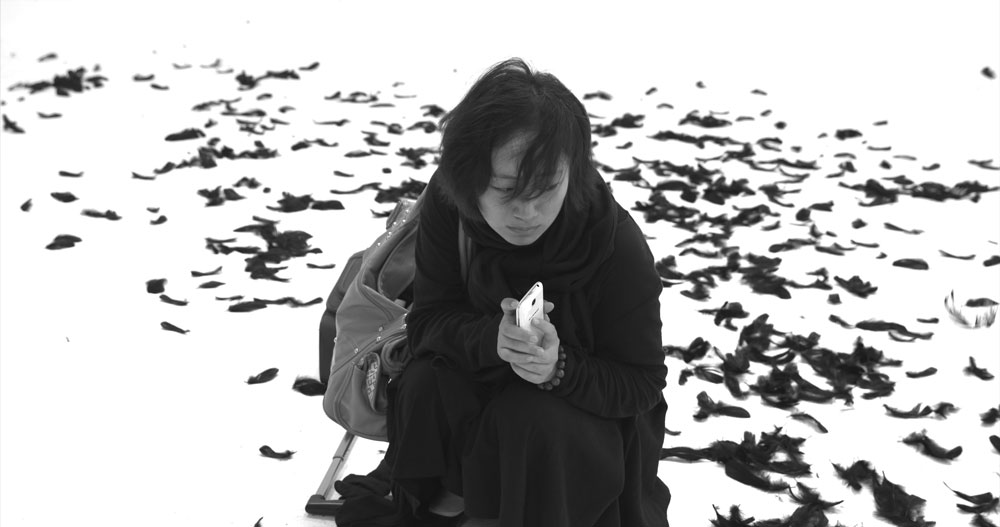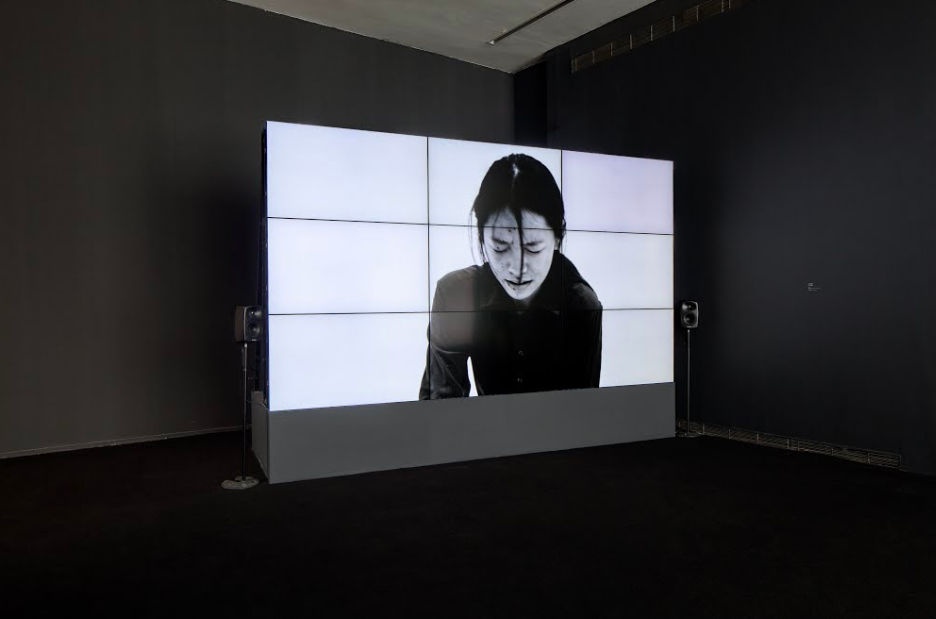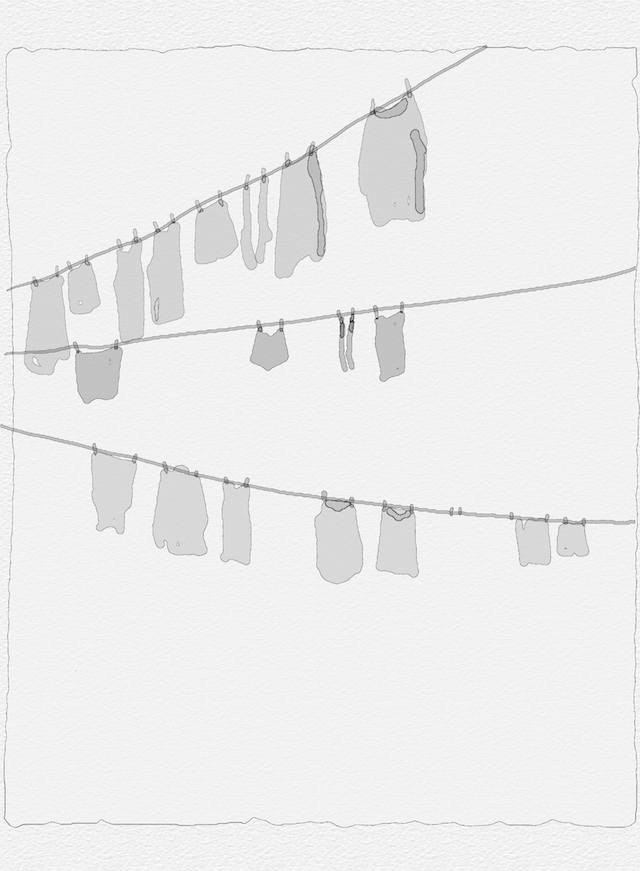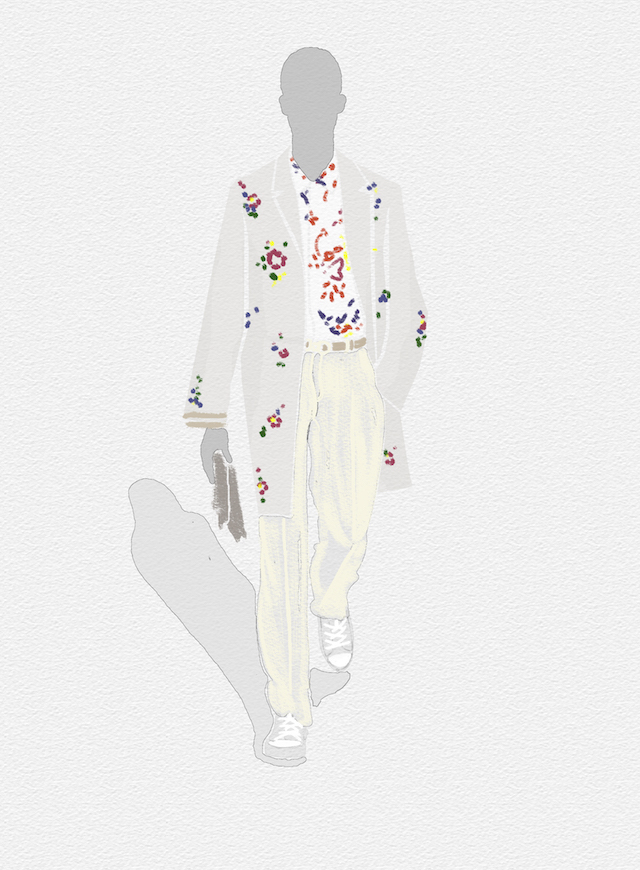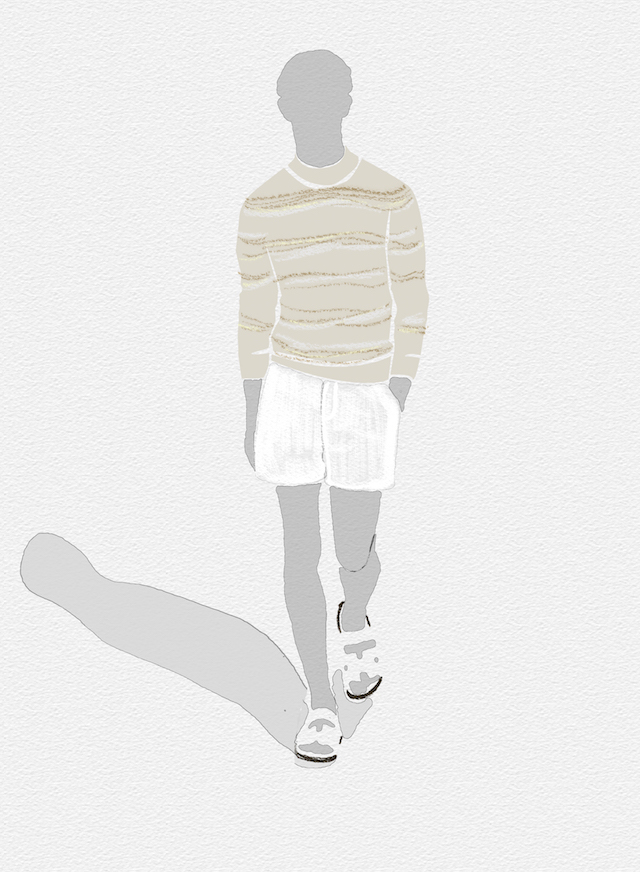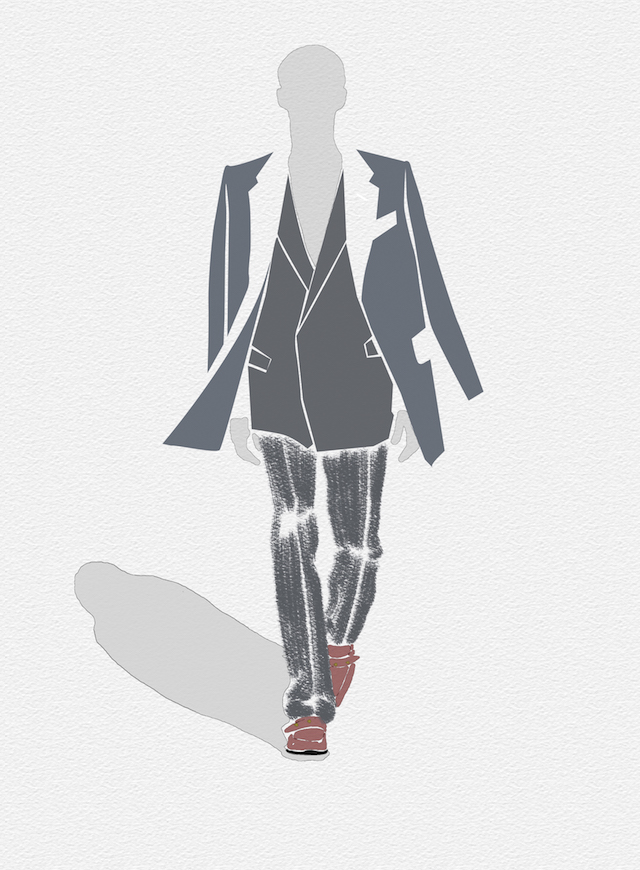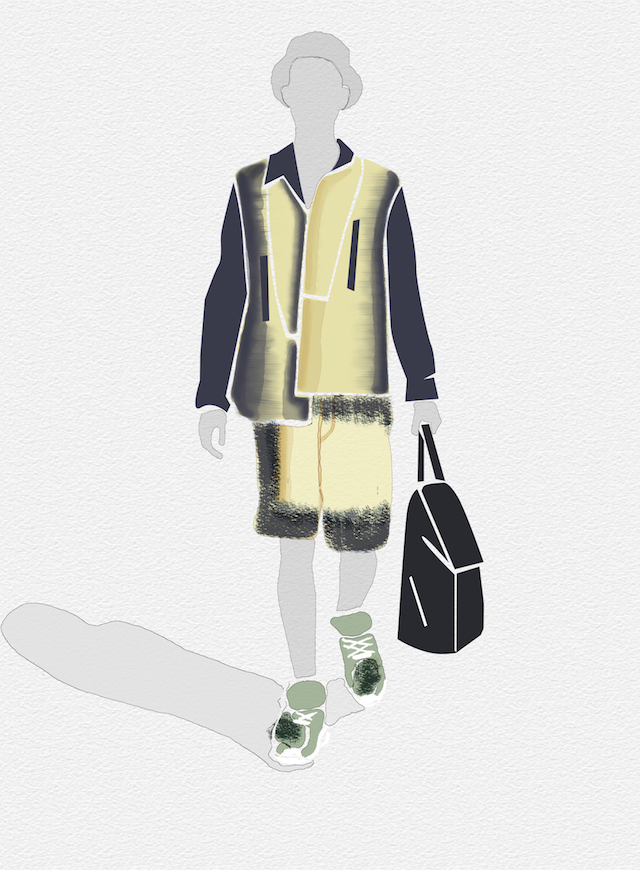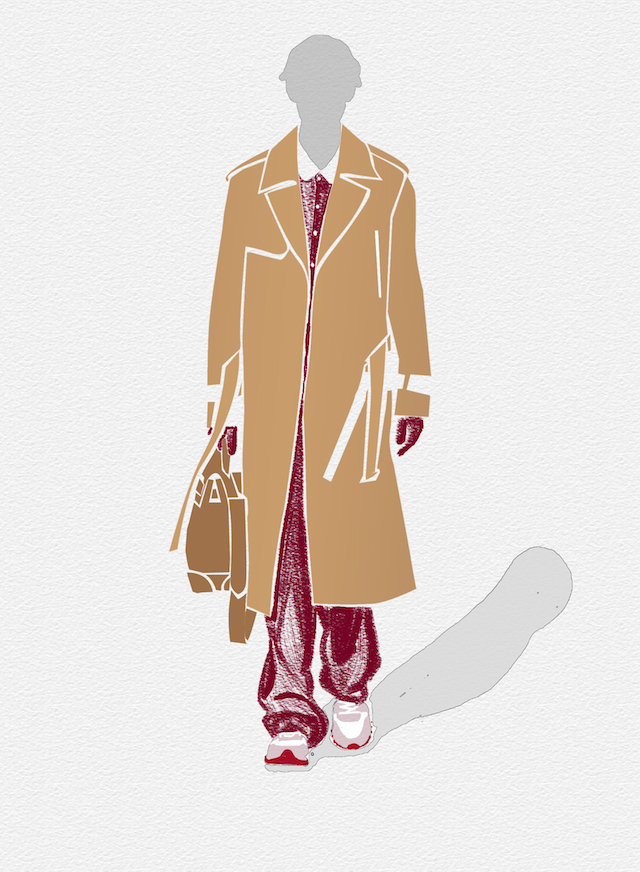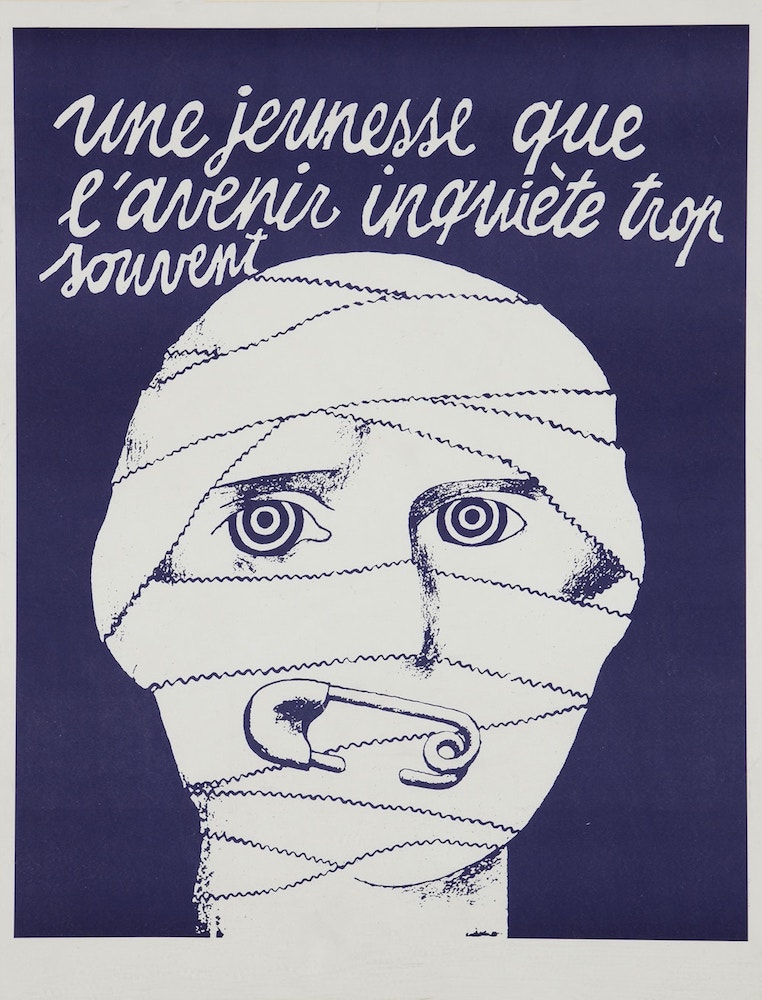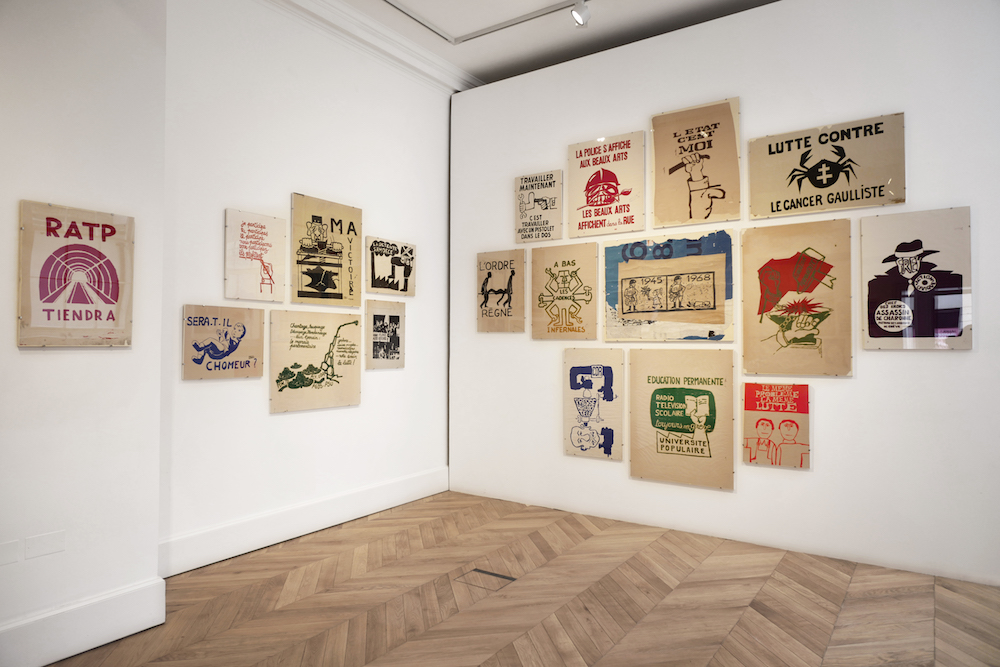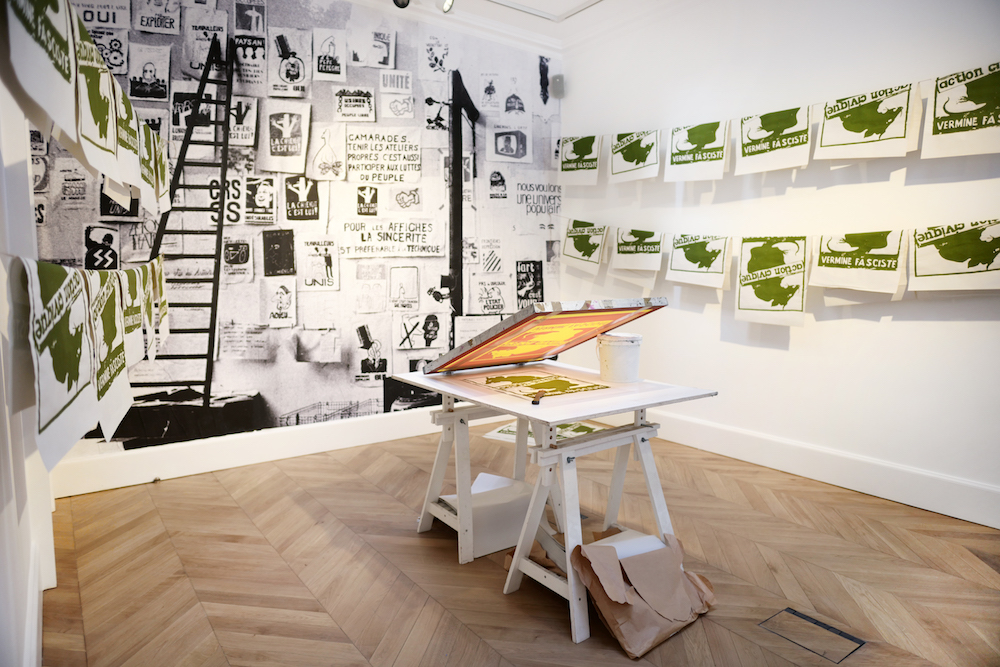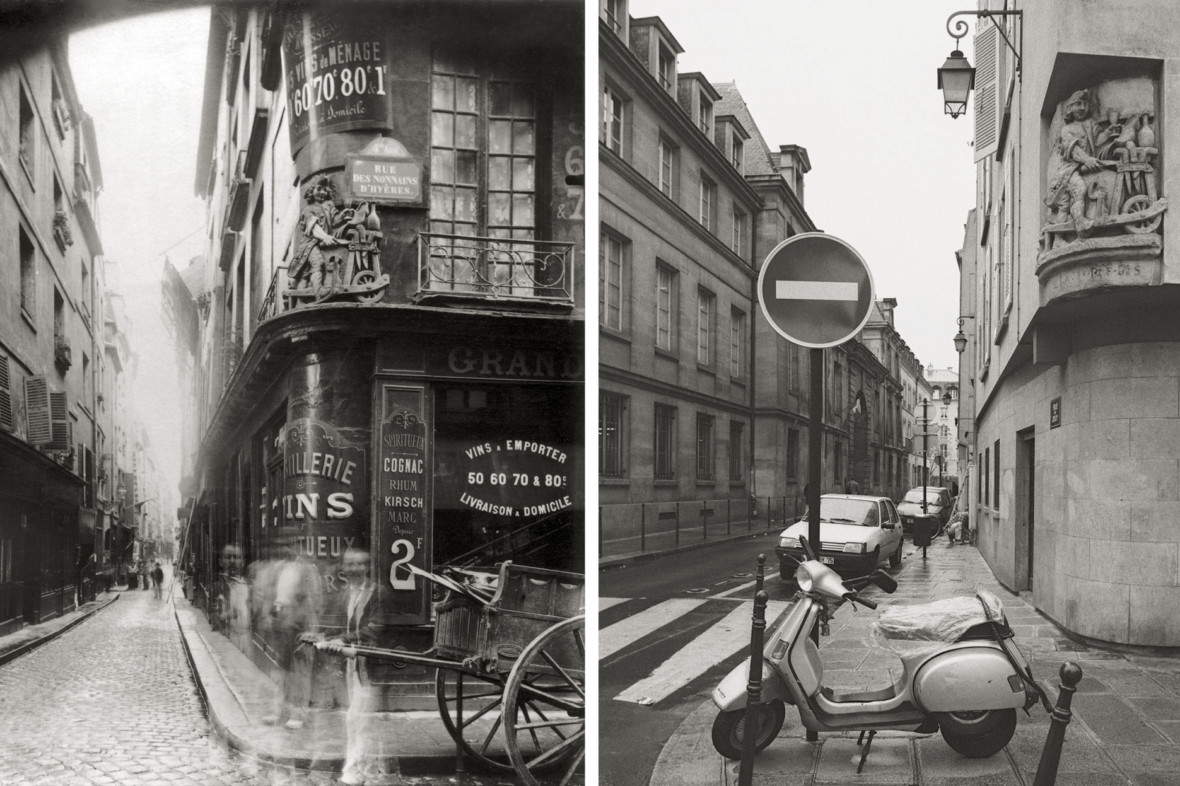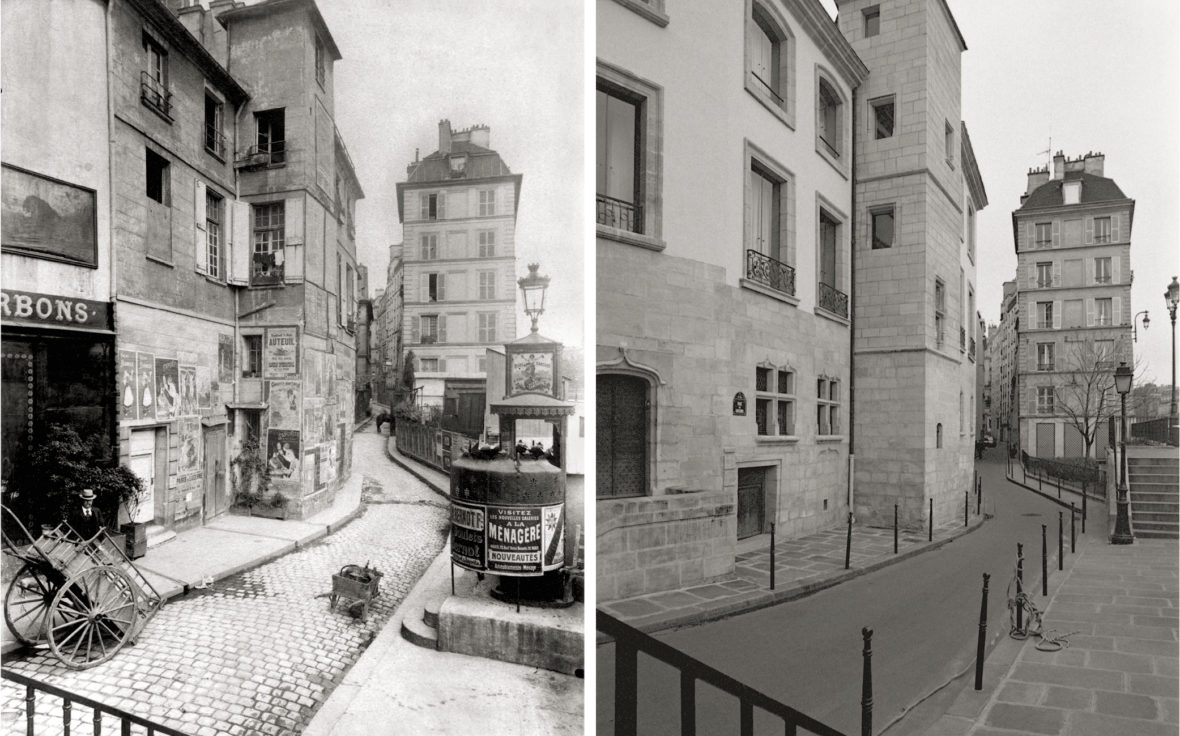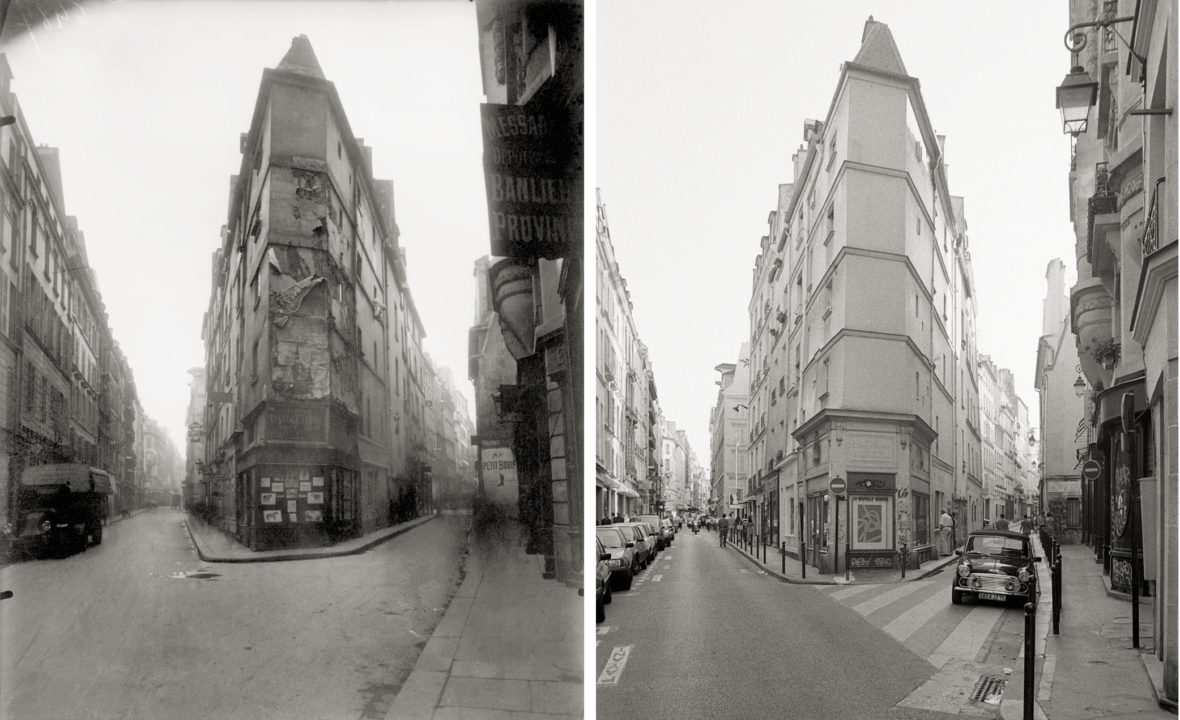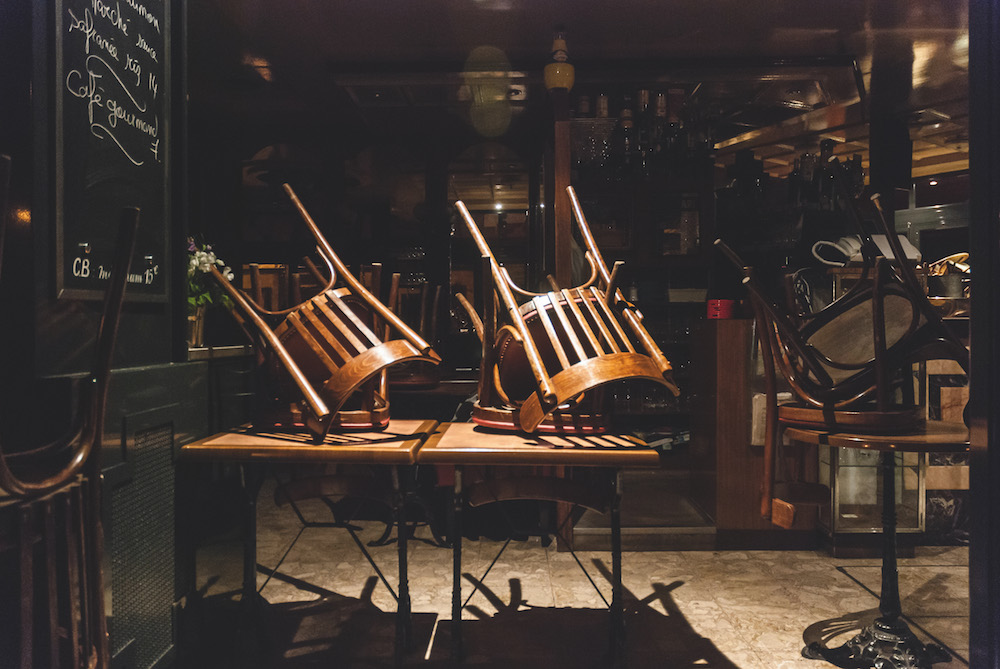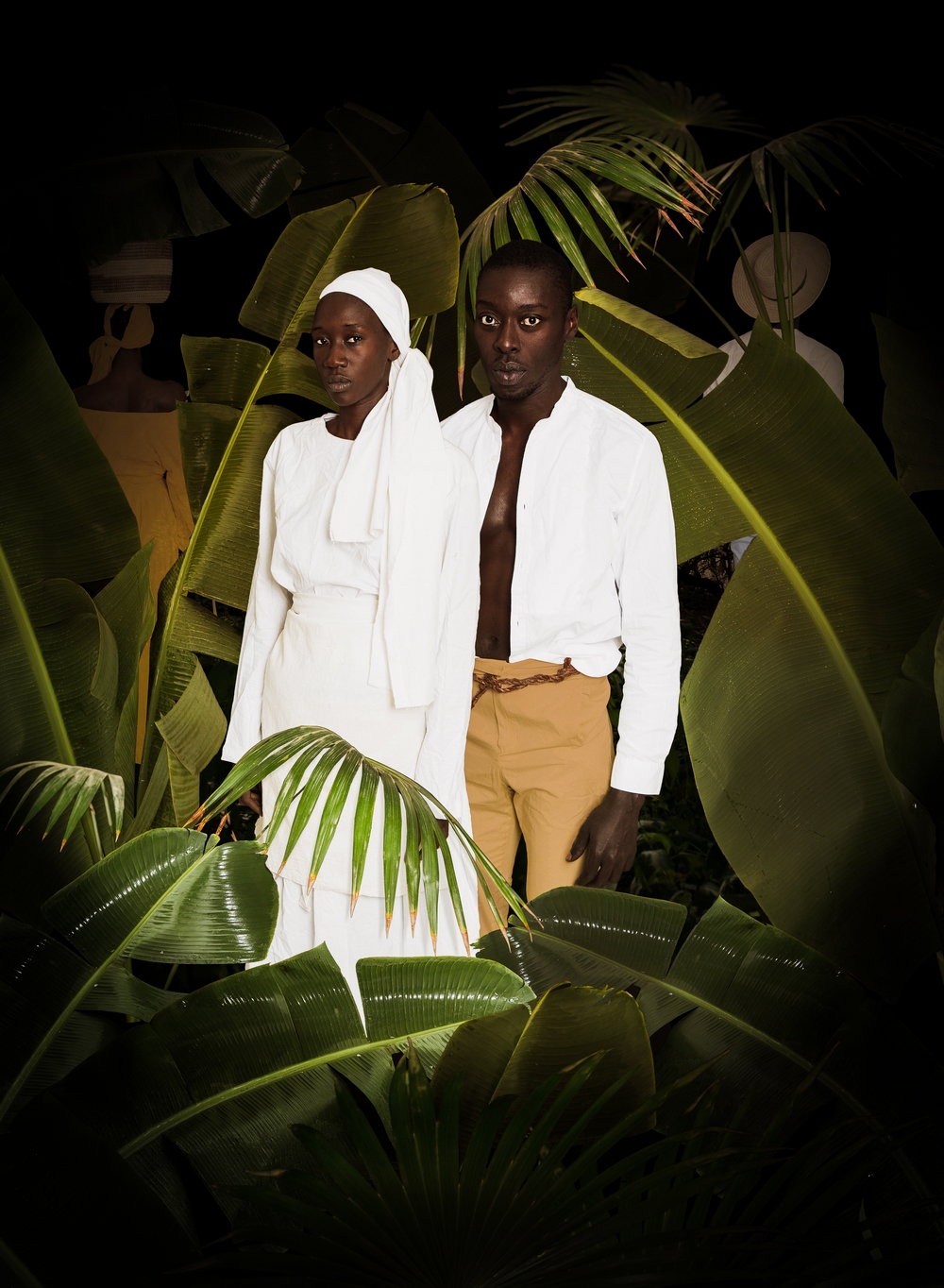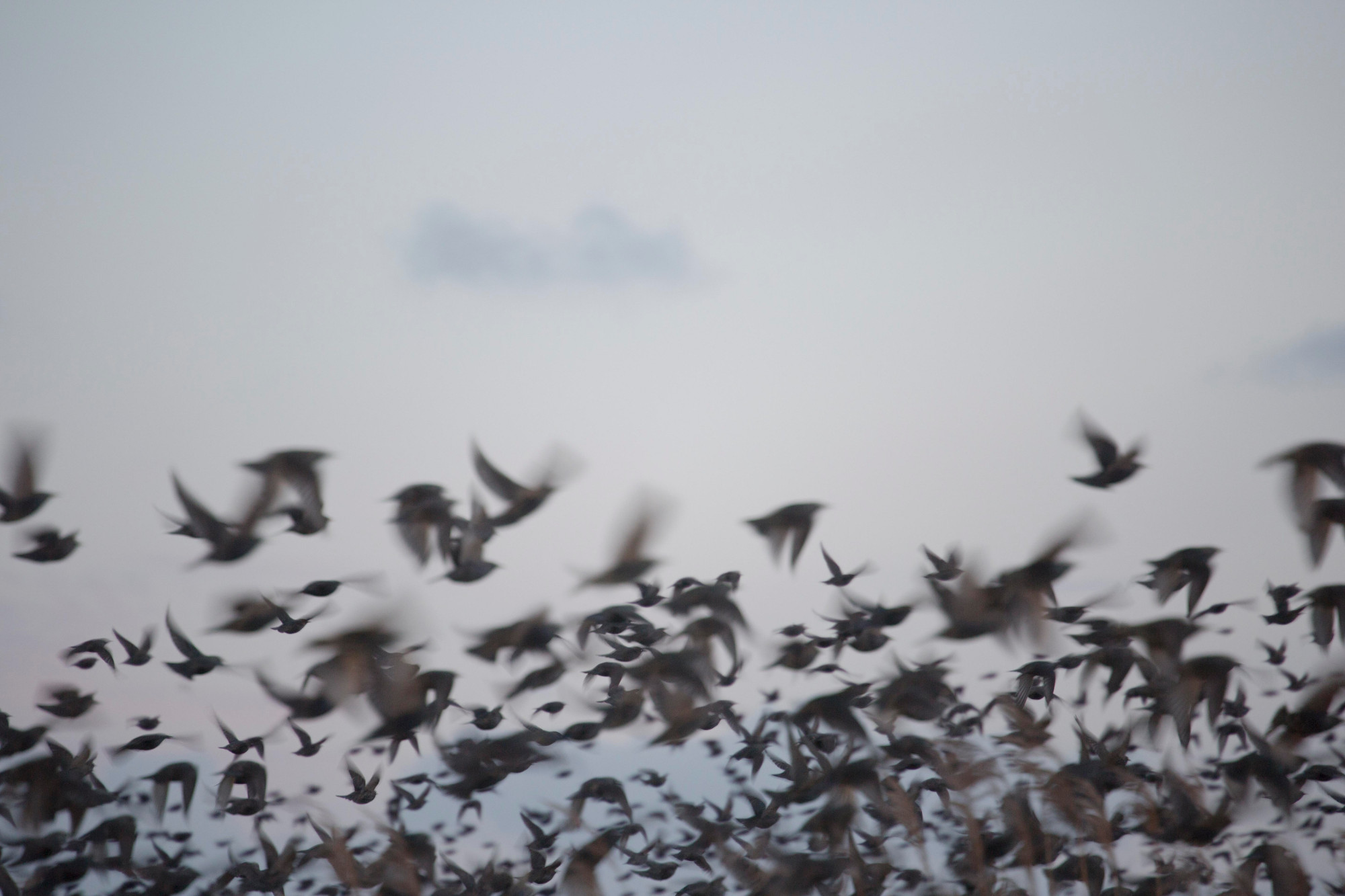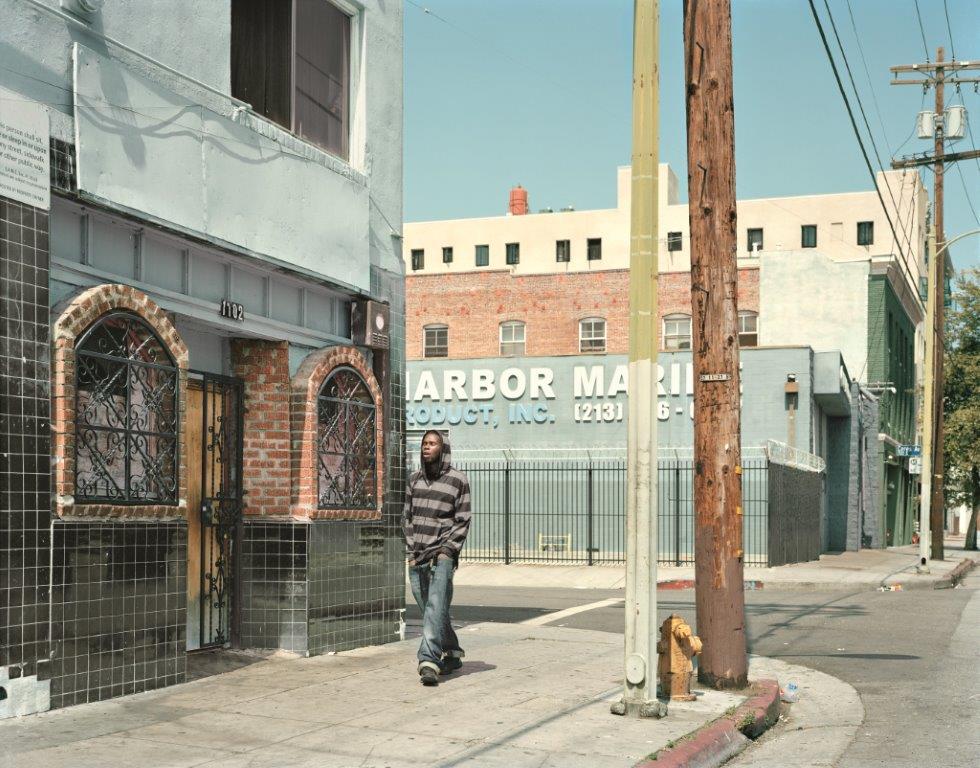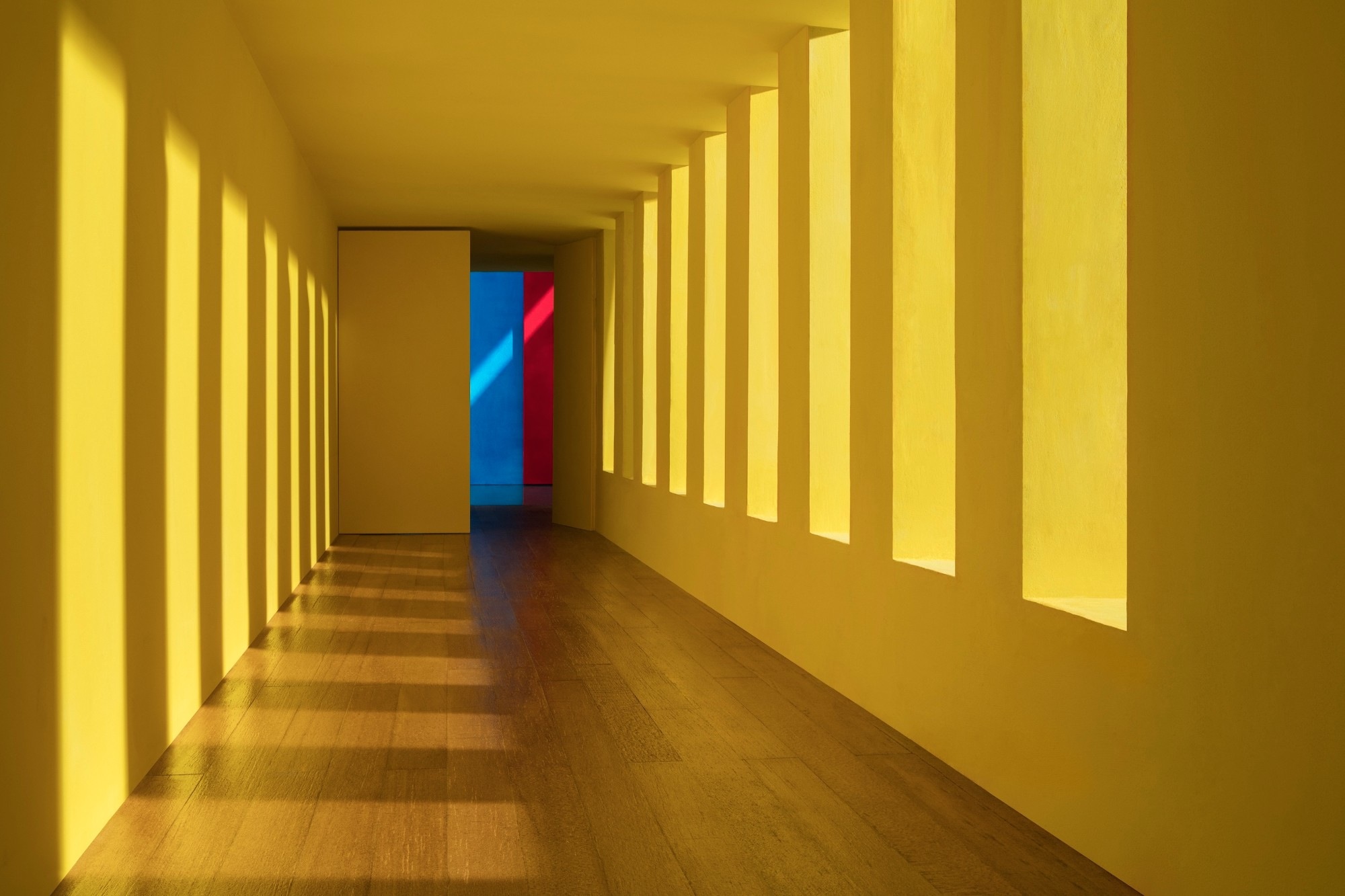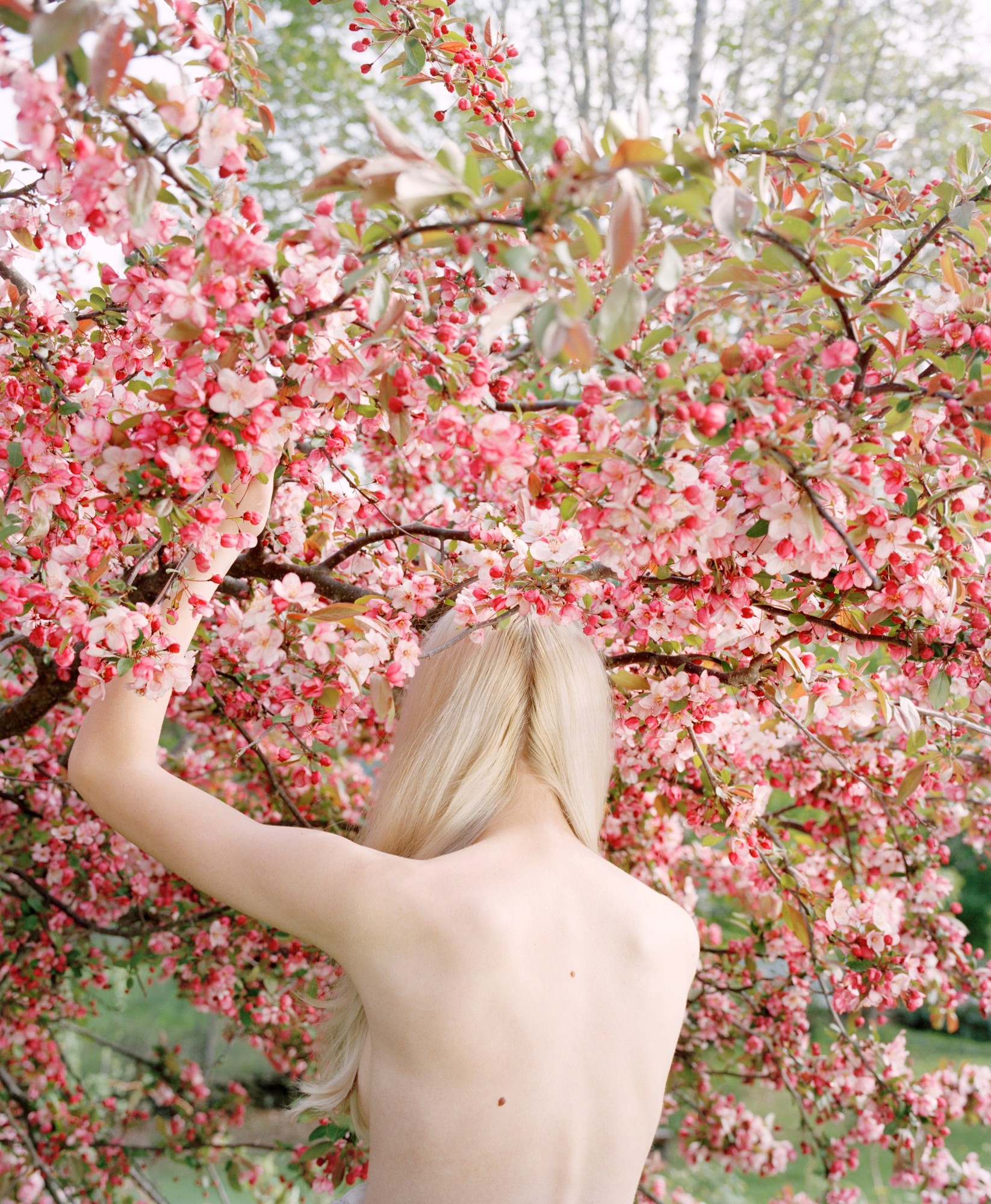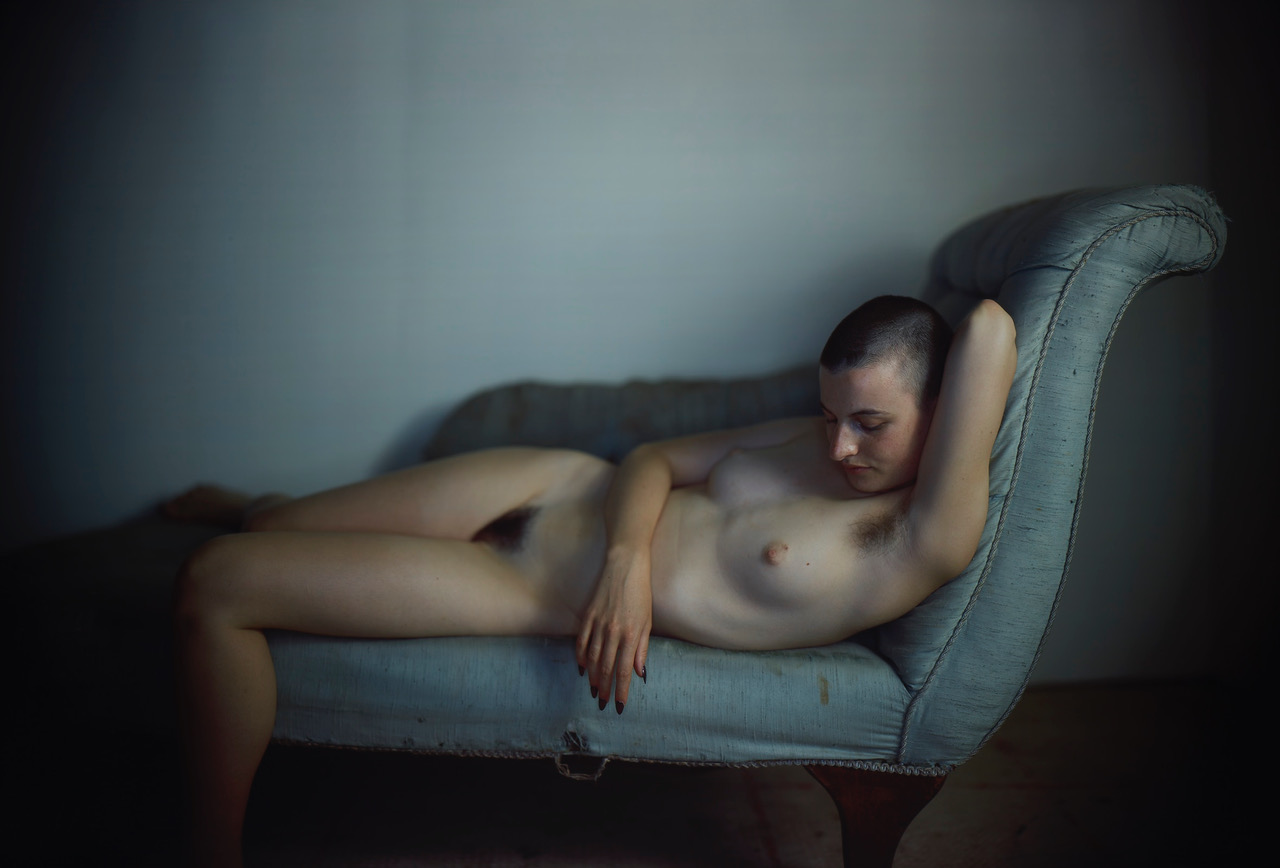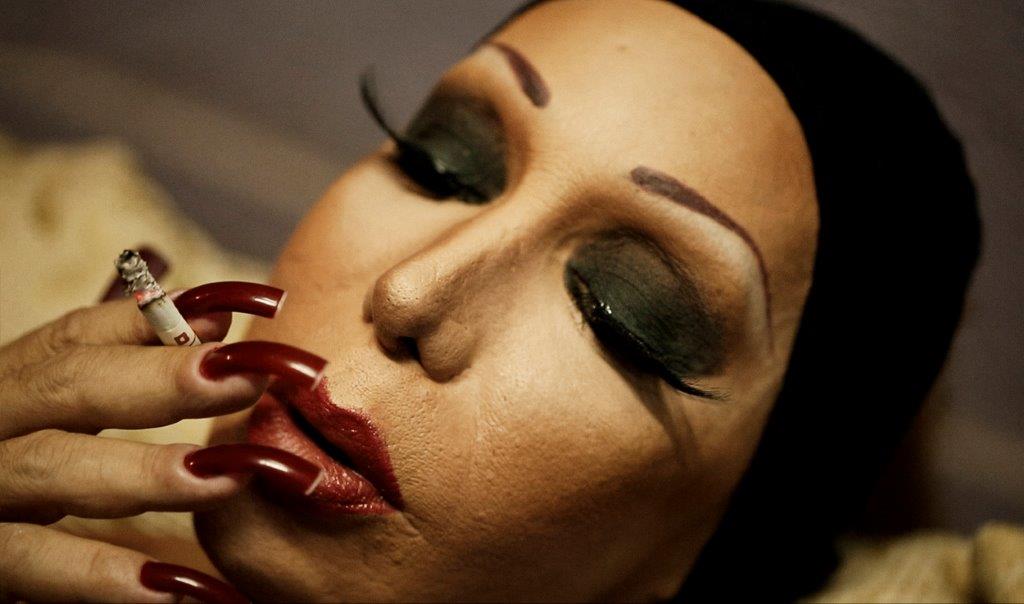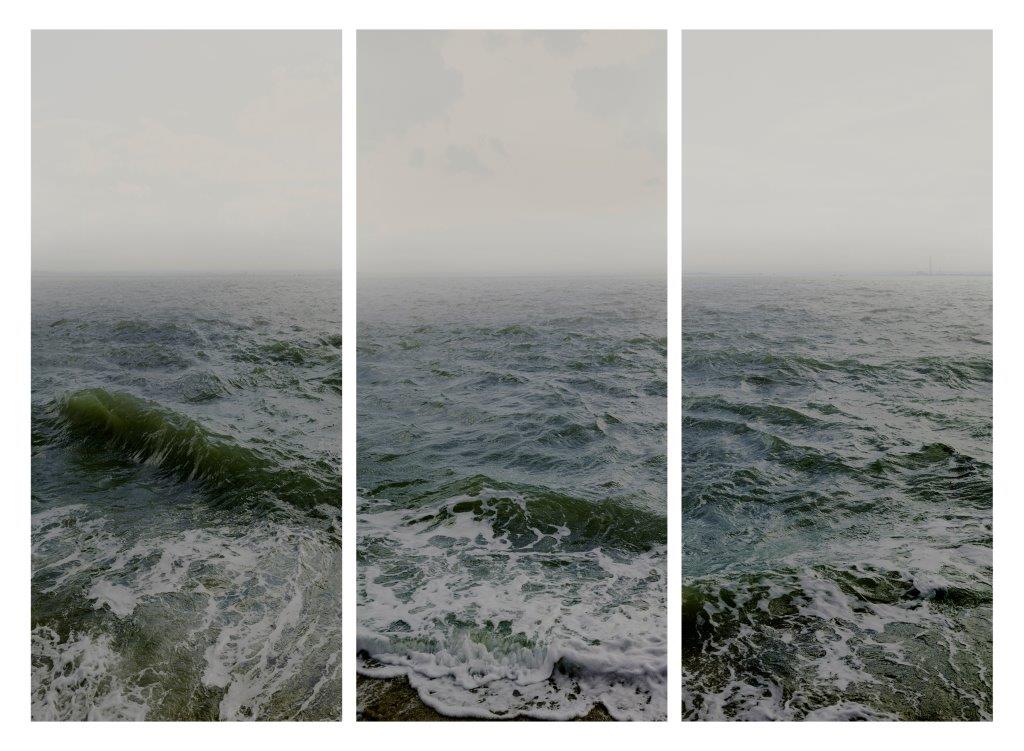Port speaks to the most famous baker in Paris about the simple pleasure of bread making

I meet Apollonia Poilâne on a Friday afternoon in her office at 8 rue du Cherche-Midi in the heart of Saint-Germain-des-Prés. The room is small, compact, and for a work space, surprisingly homely. On the wood panelled walls, paintings of bread are clustered together, which were given to Apollonia’s grandfather (and Poilâne’s founder) Pierre by artists who needed to offer payment in kind for their daily sustenance. Above me hangs a duplicate of the bread chandelier made by Apollonia’s father Lionel for family friend Salvador Dalí, back in the early ’70s. A new replica is made every three to four years, depending on how well the existing one is holding up; temperature, humidity and other conditions all affect how long it can last, so it helps that Poilâne’s wood-fired oven offers a very dry heat. Out front in the shop, which I am sitting just behind, there is a constant flow of the customers packing themselves into the tiny bakery to order bread and other baked treats for the weekend, which are hand-wrapped by a team of Poilâne ladies, all dressed in linen overcoats that bring to mind the lining of banneton baskets. And of course there is Apollonia herself, a third-generation baker carrying on Poilâne’s legacy, who speaks with such conviction about the importance of bread I feel almost embarrassed to confess to her that I’ve never attempted to make any. But after just a few minutes in the bakery, with its rustic style and wholesome sourdough loaves, each elegantly scored with a “P”, I know I want to take home some of Poilâne’s.
If you’re not aware of Poilâne, it’s probably safe to say that every Parisian is. Poilâne’s famous loaves, a round, sturdy, country-style bread called miche, are now so associated with the bakery that they are often simply referred to as pain Poilâne. Poilâne bread. They are so popular that many Poilâne fans, particularly those in the U.S., have oven-fresh miches sent to them overnight via FedEx. You can even set up a Poilâne bread club to order with friends and split the cost. And whilst the bakery isn’t one to name drop (rumoured celebrity fans includes Catherine Denueve, a fellow resident of Saint-Germain-des-Prés, Isabelle Adjani, Johnny Depp, and Robert de Niro), it’s no secret that Ina Garten stocks up on bread and biscuits whenever she’s in town, or that Lauren Bacall used to have Poilâne’s bread delivered to her hotel when in Paris.
To ensure the quality which is now synonymous with Poilâne, the loaves are made using just four ingredients, sourdough, stoneground wheat flour, water, and salt from Guérande, and hand-shaped every day by a team of bakers. Some of the loaves will be crafted at rue du Cherche-Midi and baked in the original oven, the rest will be made at the Manufacture, the purpose-built bakery located around 30 minutes outside of Paris, designed and developed by Apollonia’s parents to cope with demand. Although some of these loaves will be set aside for deliveries, many are destined for Paris; around 800 of Poilâne’s 2,000 or so retailers are cafés, hotels and restaurants in the French capital. Another customer is the Elysée Palace. To oversee the production, Apollonia tries to get to the bakery every day at around the same time that the shop opens. “To seize the day, to share breakfast with the team, to review production and help the team with any directions they may need to drive their day,” she says. If Apollonia didn’t make it over to the Manufacture earlier that morning, which would be at around 4 or 5am, a sample loaf from each baker’s batch will be delivered to her for a review at rue du Cherche-Midi. This isn’t just about simply tasting the bread, but, as Apollonia emphasises, it’s about using all of the five senses, “to get a feel for the parameters that make our signature loaves.”
Here, Apollonia speaks to Port about the craft of bread baking, what makes the humble loaf so enticing, and why we should all be getting our hands into some dough.

Poilâne was created in 1932 by your grandfather, Pierre Poilâne. Can you tell us more about Poilâne’s story?
This location (8 rue du Cherche-Midi) has been a bakery since the French revolution, but my grandfather came here in 1932 and set up his first bakery alone after touring France and working in various places. At the time in Paris there was a hype for whiter breads and smaller formats, but growing up in Normandy my grandfather had enjoyed larger formats and foods that would keep and feed you. At that time in this neighbourhood there were a lot of craftsmen and artisans here who fully embraced his philosophy, so he could embrace his craft of making big loaves of bread that would feed you; at the time people ate up to 800g of bread a day – that’s one of my loaves for just one person over two days. My father took over in the 70s, and in-between WW2 and this time there had been another hit to the bread market. But stores that were once selling coal and coffee had started turning into bistros, and these bistros had become some of my grandfather’s retailers. So my father stepped in and started restructuring the business until 2002, when he sadly passed away. I’ve been here a little over 17 years now and I’ve continued to nurture and feed our sour dough – metaphorically and physically. That is, more specifically, I look at my job as the crossroads between grains and fermentation; I make bread from wheat, rye, and corn, and that is the basis of how they evolve.
What is so special about bread?
There is something very sensual about it, it’s very emotional and it’s a craft and a know-how that is handed down through generations. It is one of the first foods eaten after your mother’s milk. It’s comforting. It can make a meal, if it’s good, and feed you in-between meals. And for centuries it was the essential food that people were eating, and it has left a legend, a vocabulary, that has carried on in to this world. I think the most written word in the bible is bread; all world cultures have it and what better way to speak to people than through their stomachs, and bread does that.

How do you craft a loaf of Poilâne bread?
First we have the sourdough, which is piece of dough from one batch which we can feed the next batch with. Top it with water, flour, and salt to make the dough, and once you have this bread dough you let it rest and rise for the first time, before cutting it and shaping it to the desired shape and form, and letting it rise for the second time in a mould, usually a wicker basket. You then cook it for an hour and let it cool on a rack.
In my new book, I offer an at-home adaptation, which is really intended to reproduce at home the emotion and feeling of making bread. I believe in having the experience of getting your hands in to the flour and the dough, and having the experience of baking at home. I wanted the recipe to be friendly to a family with a busy week, for example, you could start the first rise on Friday night and do the next rise together on Saturday morning.
How do you think your father managed to turn humble bread into the luxury brand that is Poilâne? Was this the intention?
In a nutshell, my father and mother were a talented couple. It started with my father having a desire to share what really links people. It was about bringing people together, and when he met my mother and when they worked together on Poilâne thereafter, there was still the vision of my father and his strong will to share. He navigated a very different landscape then, there was no social media, but he was a passionate man and a good businessman. But no, it never was an intention. He just spoke with a lot of love and care about people appreciating his craft and what goes into bread making.

As Poilâne grows, how do you ensure the quality is ensured at every step and in every location, especially those locations outside Paris? And how can overnight FedEx packages of bread stay fresh?
Training. I think this is super keen and important. Our production is at the root: one baker does the whole production from start to finish. When my father created the Manufacture (Poilâne’s factory located 30 minutes from Paris) the question was, if there is a rise in demand, how do we supply it? The answer was not by creating a production line, but multiplying the production spaces in an intelligent way. At heart it is still is the same production whether it’s here or at the Manufacture, where we have 24 ovens and each baker does each batch.
And for the bread sent overnight by FedEx, it is fresh, as it keeps for about a week. It’s not the same experience as if you came here and it came out of the oven a couple of hours ago, but it’s remarkable how delicious my bread can be after say, a week, thanks to its size and the quality of the flours. Whiter breads are a problem because they tend to be in smaller formats, which lets more air go through the bread and it’s easier to dry out the crumb.

France is famed for its bread, more so than the UK. And yet you have two bakeries now in London, one of which opened 20 years ago. How have Londoners reacted to Poilâne?
It was interesting to see how it was foreigners living in London, not just Brits, who appreciated the bread. In fact, at the time it was more the foreigners living in London than Brits. But we quickly found our way and we came at a time when London was turning into the metropolis that it is now. And it worked, as we then opened the café (in Chelsea).
And what about France, where the trend for baguettes is apparently on the decline. Have you noticed a change in consumer trends, or what customers want from Poilâne?
A lot of it is my flour makers telling me about those things. Broadly speaking, the trend for flour makers is for spongier, thin-crusted breads. I haven’t seen that trend. People like my bread and they like it for its thick crust. People have said that it used to have an acidic flavour and now they don’t taste that, but we haven’t changed the recipe since my grandfather, so maybe their palates have changed.

As well your signature sourdough bread, Poilâne’s range includes walnut bread, rye bread, raisin bread, even brioches, pastries, and butter cookies. With bread being the ultimate food staple, do you feel the need to reinvent, to offer the customer something more? Or has extending the range been a natural progression?
Yes, we have black pepper bread, plain, corn, both plain or with hazelnut, pain de miel, brioche… There are two drivers in innovation; one is the question of what is the taste of the grain and how does fermentation enhance the grain and flavours; the second is something that makes sense and that has a use to it. I don’t like superficial bread with things added for no reason.
With current concerns about sustainability, particularly within the food industry, how do you build sustainability into Poilâne?
It was built into the system when my grandfather started; we didn’t have the luxury of waste then. So we bake throughout the day, but to what is needed and nothing is wasted. I refuse to give into this thing of over-producing and then giving it to a charity, I’d rather produce what I need. We do work with Refettorio Paris (a community kitchen located in the crypt of the church of la Madeleine, set up by chef Massimo Bottura, who also founded the nonprofit Food for Soul) and we supply them bread, but I don’t need to do this thing of giving away leftovers because I produce throughout the day, I have little at the end, and what is leftover I share with my team. Part of the recipes in my book are what I call “bread cooking,” which is using bread as an ingredient to use it all, from the crust to the very last crumb. I’m not short of recipes for how to use bread!

You took over the business at just 18 years of age. Is it important for you that Poilâne continues to stay within the family?
Oh yeah. It’s my family’s name for starters. I could give you a tonne of other reasons, but that’s one thing it nails down to. And I’m not short of ambitions and projects for my family’s business.
Did you ever have any doubts about following in your family’s footsteps?
No, because when my father took over the family business, and he had me and my sister, he had had time to think about it, and share his craft with us, and I learnt to bake at a very young age.

The food industry is still very male-dominated. Do you feel being a woman, and one that became head of a business at such a young age, posed any challenges for you during your career?
I realise that I am a lady in charge of my family’s business, and I also realise that I am incredibly lucky to have grown up in a family where it didn’t make a difference and that was my upbringing. Beyond that, I’ve proven to my team that gender is irrelevant and with that said, I’m incredibly thankful to my lucky stars for making that a reality and possibility. My age was more of a discrimination, and I definitely felt at the time my young age was sometimes an issue, but I didn’t care.
Any plans for the future?
2020 is our 88th anniversary, and I like the symmetry of 2020 and 88. We’ve also always been at number 8, rue du Cherche-Midi, and 8 is a beautiful number: put it sideways and it represents infinity, so that’s another thing. I also realise that’s it’s an auspicious number for humans, in Asian cultures, and 88 is an important age in Japan, so why not this year do a wink to that Japanese tradition?
“Poilâne: The Secrets of the World-Famous Bread Bakery” by Apollonia Poilâne is available to purchase now from Poilâne stores in the UK (located on Elizabeth Street in Belgravia and Cadogan Gardens in Chelsea) and through Poilâne’s online boutique
Photography by Philippe Vaurès Santamaria
